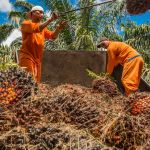Curbing Deforestation in Sub-Saharan Africa: Why Woodfuel Alternatives Are a Key Sustainable Solution
Deforestation in sub-Saharan Africa is rampant. Africa has roughly one-sixth of the world’s remaining forests but accounts for a staggering 43% of recent global deforestation. It’s the only region in the world where the pace of forest loss has increased in each of the last three decades. Many countries, including Kenya, have lost more than 75% of their tree cover in the lifespan of a single generation.
Why? The reason, in large part, is because wood is still the main fuel used in Africa. Woodfuels account for over 80% of the primary energy supply in sub-Saharan Africa, and over 90% of the population rely on firewood and charcoal for energy, especially for cooking. Meanwhile, the U.N. Environment Program has projected that demand for wood in Africa could triple by 2050.
That stands in sharp contrast to developed countries. In the U.S., for instance, woodfuel today accounts for just 2% of the country’s energy consumption. But that wasn’t always the case. Until the late-1800’s, when the country increased its use of coal, woodfuel in the U.S. — as with Africa today — provided the vast majority of the energy supply.
Market Dynamics and Sustainable Solutions
However, the prevalent use of woodfuel in Africa — itself a renewable resource — is not the inherent driving force behind deforestation. Rather, the fundamental problem lies with the alarming imbalance between the sustainable supply and the increasing demand for woodfuel in many countries across the continent. At present, Kenya has an estimated 40% sustainable supply deficit that is projected to increase in the coming decade. This deficit has led to a national woodfuel and deforestation crisis.
Across East Africa there is a relatively fixed supply of sustainable forests and a soaring demand for wood, leaving the deficit to be largely met through unsustainable and often illegal harvesting. In recent years, this illegal logging has led the Environment Ministry of Kenya to impose a nationwide ban on all logging in public and community forests. The country has also united with other governments in sub-Saharan Africa to fight the illegal trade in timber that is depleting natural forestry resources across the region.
But more is required to address the urgency and scope of deforestation. Government interventions, while helpful and necessary, are simply not a sufficient long-term solution. Enforcement resources are limited, government agencies are already strained and political support for these approaches can be inconsistent. Market-based approaches are the critical component of a sustainable solution. Broadly speaking, there are two market-based tactics available: Either increase the supply of wood by planting more trees or develop alternatives to woodfuel.
At Kenya-based Vuma Biofuels, we are developing woodfuel substitutes, while peers of ours (like Komaza) are focused on the complementary approach of planting more trees. Our market-based approach of providing superior and sustainable woodfuel-alternative energy is the crux of our deforestation solution. Vuma has developed a biomass briquette we call “VumaBriqs” made from bagasse, a sugarcane waste product. VumaBriqs are an agricultural waste-to-energy product developed principally for large-scale industrial users. They are used as thermal energy for steam generation in industrial biomass boilers, as they have greater total calorific content and burn longer and cleaner than conventional woodfuel.
The Perils and Promise of the Tea Industry
Vuma Biofuels is leveraging its approach to help address one of the key drivers of deforestation in Kenya: the tea industry. Kenya is the world’s third-largest producer and exporter of tea, making tea factories the country’s largest industrial consumers of woodfuel. Kenya’s tea companies produce nearly half a billion kilograms of tea annually — they are energy-intensive operations that require thermal energy to generate the steam that is used for withering and drying green tea leaves. At present, nearly all of that thermal energy is derived from burning conventional woodfuel. To produce 1 kg of tea requires 1.9 kg of woodfuel, and we calculate that a single tea factory burns upwards of 250 trees per day. Kenya’s tea factories consume nearly one million tons of firewood annually, the equivalent of 5.7 million trees.
Where does this woodfuel come from? For the roughly 70 tea factories managed by the Kenya Tea Development Agency (KTDA) — which comprise the majority of the country’s total tea factories — there are three sources: 1) factory-owned and managed wood plantations; 2) government forests through licensed suppliers; and 3) smallholder farmers’ land in the general vicinity of the tea factory. The latter is where the greatest power imbalance and deforestation pressures lie. When supply falls short, tea factories are often forced to source firewood by “any means necessary,” which all-too-often means unlicensed and illegal local efforts to buy or steal wood from smallholders’ land.
Recognizing the potential for woodfuel alternatives at tea factories, a recent multi-stakeholder initiative has taken shape that includes IKEA Foundation (as funder), Rainforest Alliance (as project developer) and the KTDA (as implementer). The aim of the program is for Kenyan tea factories to accelerate their switch from firewood to more sustainable fuel sources — beginning with 12 tea factories and a target to reduce firewood by 30%. In a rigorous and thorough process, Vuma Biofuels was selected as an accredited and prequalified supplier to the KTDA for the pilot program. As the program scales and more tea factories begin to adopt woodfuel energy alternatives, millions of trees and huge swaths of forests can be saved.
We believe this work can make a substantial contribution to reducing deforestation in Kenya — and we hope similar approaches will emerge across the region. By supporting sub-Saharan Africa as it moves beyond its reliance on woodfuel and develops more sustainable energy solutions, these efforts can help preserve the continent’s natural resources, while powering its continued economic growth.
Note: This is the second article in a short series focused on the waste-to-value and circular economy from the BESTSELLER Foundation, which is committed to supporting the development of a circular economy ecosystem in sub-Saharan Africa by investing in trailblazers directly, and also by creating partnerships that drive more capital towards the sector. You can read the first article here.
Ian Otula is the CEO and co-founder of Vuma Biofuels; Aaron Pattillo is Chairman and co-founder of Vuma Biofuels; and Wassa N’Gandjo Cisse is an Investment Analyst at the BESTSELLER Foundation.
Photo caption: Vuma’s bagasse briquettes, a sustainable woodfuel alternative. Photos courtesy of Vuma Biofuels.
- Categories
- Energy, Environment



